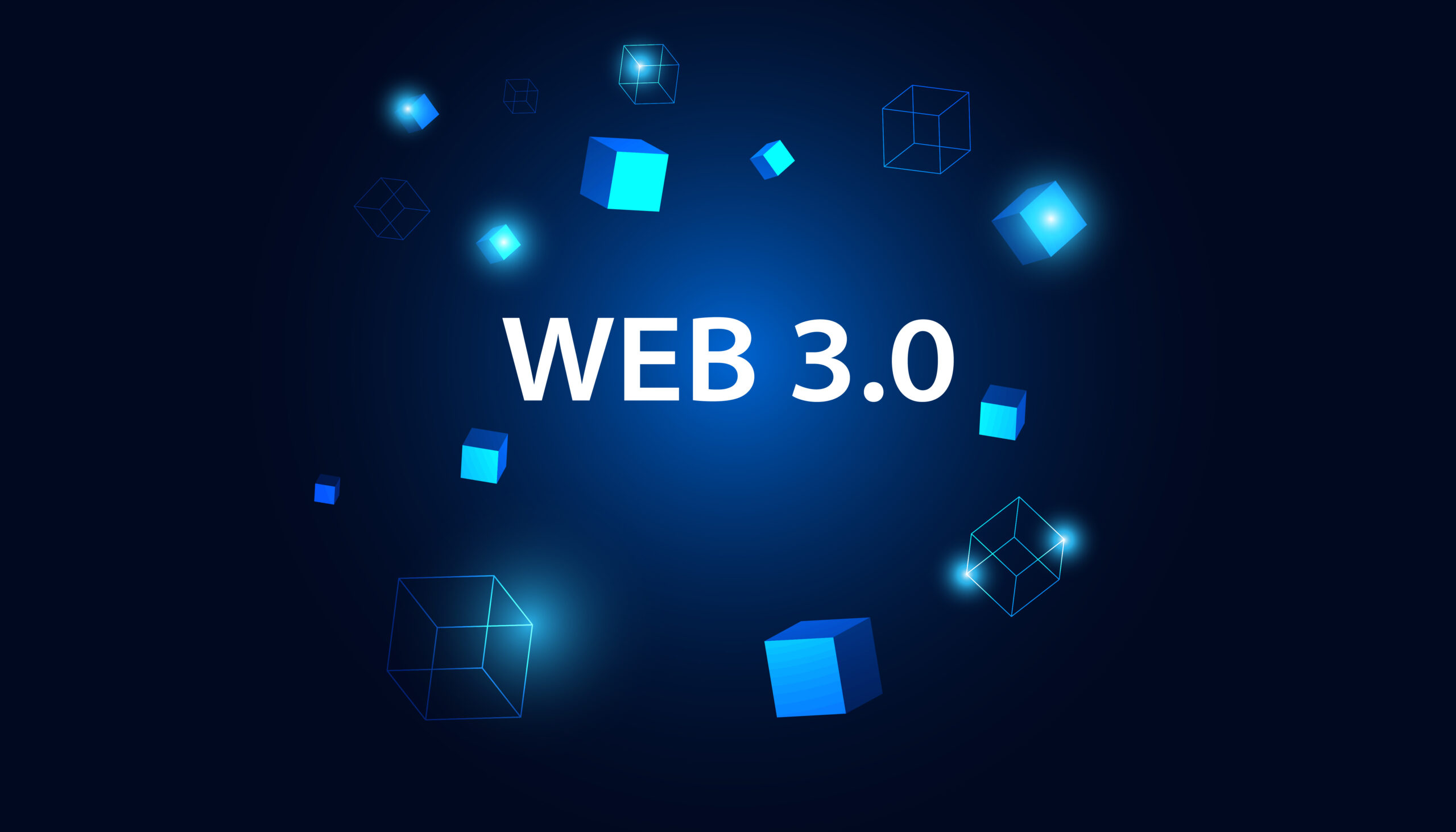In the constantly changing digital world, Web3 technology is taking off like a powerful hybrid engine allowing people to live and transact online differently. Web3 will revolutionize industry after industry with its promise of greater safety, decentralization and control for users. Whether in finance or games production, medical services or managing supply chains, enterprises are all busy probing Web3’s exciting potential for fostering innovation and boosting productive efficiency.
But what is Web3 exactly? To put it simply it could be described as another generation of the internet. Web3, built on blockchain and other decentralized technologies, aims to give individuals more power by letting them control their own data. It also removes intermediaries so that securely stored data never needs traveling through networks or under the control of anyone else.
Web3 refers to the decentralized web, where users have control over their own data and interactions without reliance on centralized authorities. It is constructed with blockchain and other decentralized technologies, such as smart contracts or distributed ledger systems. Looking back at the Web2 era – characterized by platforms like Facebook and Google which collect and monetize user data – Web3 wants to give users some power back for real.
Web3’s core aspects are a return to increased privacy, security to suit the user and even control over as much of it as possible. With the help of cryptographic techniques and decentralized storage, Web3 applications are designed to keep your data out of unauthorized hands, it allows users complete ownership of their own digital assets.
The internet development: Web1, Web2 and now Web3
Understanding Web3 and its significance is only in relation to its predecessors. We will discuss these three stages in descending order of their appearance the next section.
Web1, also widely known as the “read-only web”, was the first iteration of the Internet. It was primarily made up of static sites providing information for consumption (passive) by users, with no interactivity at all—hardly even signs that people were leaving comments or paying for newer content. There was simply no chance for user-generated contributions to speak of.
Web2, also known as the “read-write web,” brought an epoch-making paradigm shift when it introduced dynamic websites and interactive applications. The era is characterized by user-generated content like blogs on social networks or online collaboration; but it’s also the widely introduced, centralized platforms known to collect and control user data that raise questions about data sovereignty.
As another result of Web3’s arrival: welcome to a new era of the Internet that emphasizes user privacy, security, and control over data (and which gets rid of intermediaries).
Key features of Web3
Web3 is characterized by several key features that distinguished it from previous iterations. These characteristics include:
Decentralization
The heart of Web3 is decentralization. By using blockchain technology and other decentralized institutions, Web3 does not need a central authority or intermediary. It is a distributed system where no single entity controls everything, and therefore more resilient against fraud and censorship.
User control and ownership
Web3 seeks to empower individuals by granting them control over their data and digital assets. Through cryptographic techniques, users can securely manage and transfer their assets without relying on third parties–thus giving them more independence and privacy.
Interoperability
Web3 promotes interoperability, enabling different blockchain networks and decentralized applications (dApps) to communicate and interact smoothly. This makes it easy for users to utilize a broad array of services and assets across various platforms in general; hence both engenders new ideas while also promoting cooperation.
The smart contract
The smart contract is an agreement packaged into an algorithm and automatically executes a encrypted on block chain. They can coordinate the implementation of contracts and transactions, eliminating the need for middlemen.
Benefit together
As code, smart contracts are publicly executed according to the agreement of predefined conditions.Tokenization The tokenization of assets could then occur in a digital format, and this brought liquidity. Tokens represent all sorts of things such as cryptocurrencies , digital collectibles and real estate ( or stocks ). Tokenization provided a way to divide up assets for small investors and make trade easier among peers.
Web3 offers a wealth of benefits and opportunities for businesses, individuals and the community. Here are just some key advantages:
Better Privacy and Security Websites
Web3 is designed with user privacy and security at its core. Decentralized storage can help ensure that the personal data of users is under their control more fully, reducing risks like data breaches and unauthorized access. By leaving the center of authority Web3 also minimizes threats to freedom or distortion.
Incentive and human rights
Web3 provides mankind an excellent opportunity to take charge of their own digital possessions, assets and information. Users can securely regulate their own fortune without relying on intermediaries, imposing some kind of onus for success on themselves. Centralized platforms transfer power to individuals, effective potential make-over modern online interactions or even the face of the transfer century.19
Novel Fruits of Innovation and Entrepreneurial Web3 offers a richer field for entry and innovation. Developers who develop applications on a decentralized platform are freed from the threshold that centralized systems inevitably bring. This openness inspires individuality and participation in development, bringing about new services you may most likely never have seen otherwise.
Financial inclusion and usage
Web3 actually has the ability to narrow the disparity in financial inclusion by providing financial services for those who are unbanked or partially banked. Through decentralized finance(DeFi) platforms, people can enjoy loans, savings and opportunities for investment without traditional financial institutions. Web3 also changes the way we make purchases across borders and lifts walls between different corners of the world.
Transparency and Accountability
Web3 promotes transparent values as well as strict responsibility. All transactions and interactions saved on blockchain networks cannot be modified but may be freely viewed by anyone who wants to see them, so there is a clearly traceable line of evidence. In this way, the openness can foster trust between people and businesses so that business will become more accountable.
Success Stories in Web3
The potential of Web3 has already been born using a wealth of successful projects in different sectors. Some notable examples are as follows:
Decentralized finance (DeFi)
DeFi has emerged as one of the most successful applications of Web3. Platforms like Ethereum-based decentralized exchanges (DEXs) and lending protocols have experienced tremendous growth, allowing users to trade, lend and borrow cryptocurrencies all without relying on intermediaries. DeFi has opened up access to financial services for the people and provides new avenues for investment wealth creation.
Non-fungible tokens (NFTs)
NFTs have transformed the market for digital art and collectibles. Artists, creators all can make their works into collectibles and they have the unique ownership label as well as method of verified provenance line attached. NFT markets have expanded in volume: there is strong support from the public with high-profile sales and cooperation agreements. NFTs are also not limited to art but have a large number of applications in the fields of games, virtual real estate and virtual fashion.
The advent of a decentralized identity system (DID)
Using Web3 technology, decentralized identity solutions enable individuals to control their digital identity. Users of DID platforms can manage and verify their own identities, eliminating the need for centralized certification agencies. The technology has potential applications in a variety of sectors including healthcare, finance, and supply chain management because it can provide secure and private identity verification functions.
Supply chain management
Web3 brings new opportunities for improving supply chain management. By harnessing blockchain and smart contracts, businesses can follow the flow of goods throughout every link in their supply chains; that they are really genuine. This ensures that there is greater accountability and reduces the risks of counterfeiting coming onto the market.
Challenges and limitations for Web3
Web3 has huge potential, but it also faces some special problems and is limited in certain ways that need to be addressed in order for widespread adoption:
Scalability
One of the major issues faced by Web3 is scalability. For instance, blockchain networks like Ethereum currently have problems around transaction throughput and scalability. As more users and applications join the network, congestion and high fees are liable to become significant problems. Solutions for scaling, such as Layer 2 protocols and sharding, are on the horizon.
Usability
Web3 applications often require users to interact with complex interfaces and handle cryptographic keys, which can be difficult for non-technical users. Improving the user experience and making Web3 more accessible to a wider audience is essential for its widespread adoption.
Regulatory and legal trouble
The decentralized nature of Web3 presents regulatory and legal challenges. In current legal systems, decentralized systems are not adequately accommodated by any specific regulatory model, and this leads naturally to doubts and disputes. Developing regulatory systems which allow technological innovation while still making sure there is protection for consumers is crucial if Web3 is going to be able to grow sustainably.
Consumption of energy
Access to these Web3 technologies, especially proof-of-work (PoW) blockchains, can consume quite a bit of energy. Concerns have been raised about their effect on the environment. In order to facilitate success in meeting these concerns, it is crucial for more energy-efficient consensus mechanisms such as proof-of-stake (PoS) and other sustainable alternatives to take root.
How to join Web3
Joining Web3 will be a journey full of excitement and reward. Below are five steps to start with:
-
Learn: Begin by getting to know what Web3 says is essential. The basic concepts include blockchain, smart contracts and decentralized applications. There is a wealth of online resources, tutorials and courses available to help you get started.
-
Joining communities: Get involved with the Web3 community by visiting online forums, social media groups and blockchain-related events. These communities are a wonderful source of knowledge, business activities and opportunities for collaboration.
-
Play with dApps: Get hands-on experience with decentralized applications and platforms. Start by using wallets, trading on decentralized exchanges, or joining in decentralized finance protocols. This will help you better understand both the user experience and potential of Web3.
-
Contribute to open-source projects: If you have development skills, consider contributing to open-source Web3 projects. Through this you can learn from experienced developers, help build the ecosystem and win practical experience.
-
Keep up-to-date: Web3 is a fast-evolving space, so it is important to be on top of the latest developments, news and trends. Watch for trustworthy blogs, newsletters and leading figures in the Web3 space.
Web3 tools and technologies
Decentralized applications and services owe their existence to a variety of tools and technologies developed by Web3. Here are some of the important ones:
Blockchain Platforms
Ethereum, Polkadot and Solana; these are the base for the apps of Web3.0 in the same way that system development platforms Linux, Windows or MacOSX provide material support. Supported by these platforms are smart contracts and developing decentralized applications (dApps). This allows developers to create and run their own applications anywhere they choose without needing huge IT resources or capital expenditure.
Wallets
Web3 wallets help you get the most out of their decentralized apps. At present: They let users securely manage digital wallet funds, sign transactions on the blockchain and prove who they are by zk-SNARK technology. Common options include DeFi wallet, Metamask, Trust Wallet or Ledger.
Decentralized storage
IPFS (InterPlanetary File System) and Filecoin enable the distributed storage and retrieval of data. These technologies offer an alternative to traditional centralized data storage solutions.
Oracles
Oracles deliver information from the outside world to smart contracts, allowing them to interact with other data systems on blockchain and beyond.
Scaling Solutions
To solve the scaling problems of Web3, various scaling solutions are being researched and developed. These include layer 2 protocols like Optimistic Rollups; state channels; and sharding, a method of dividing the blockchain into smaller chunks in order to increase transaction throughput.
Web3 vs Web2: A Comparison
Web3 and Web2 are two different paradigms of the Internet. Below is a comparison table: Data ownership and control In Web2, the more centralized have data ownership. Users have typically very little control over their own data so privacy is largely determined by the platform’s policies. In Web3 supply and demand are placed in direct relationship. Thanks to cryptographic techniques and decentralized storage, users have full ownership and control over their own data.
Intermediaries and trust
Web2 relies on intermediaries like social media platforms, search engines, and e-commerce platforms to facilitate interactions and transactions. Users trust these intermediaries to handle their data and provide services. Eliminating the middleman from Web3, smart contracts and blockchain allow trust to grow in leaps and bounds as “trustless transactions” take over.Privacy and security
Web2 platforms collect and monetize user data, leading to privacy concerns. Data breaches and unauthorized access are also prevalent in centralized systems. Web3 uses decentralized storage and cryptographic techniques to better protect privacy and security, thereby reducing the risk of data being hacked or misused. That means users can gradually begin taking control over their own information once more.Innovation and openness
Centralized entities own and control web2 platforms, which restricts the potential for innovation and competition. Web3 fosters innovation and openness, allowing developers to build and deploy applications without permission. This open development model encourages collaboration, with diverse solutions rife for further exploration. Monetization and value capture
In Web2, platforms like Google and Facebook monetize user data and capture value through targeted advertising and other business models. Web3, value capture is more distributed, with users and participants benefiting from the value created within the ecosystem.Conclusion
As Web3 picks up speed, the horizons for progress and innovation are huge. From decentralized finance on the one hand to digital art marketplaces on the other, Web3 is bound to reshape industries and empower individuals even more. However, challenges such as scalability are and usability—plus regulatory regimes—will have to be addressed if widespread adoption is to become a reality before long. If we want to be at the forefront of this revolutionary moment, we have to learn, participate and embrace Web3’s tools and technologies. Let’s welcome the progress that Web3 brings and explore the myriad possibilities in our digital future.



